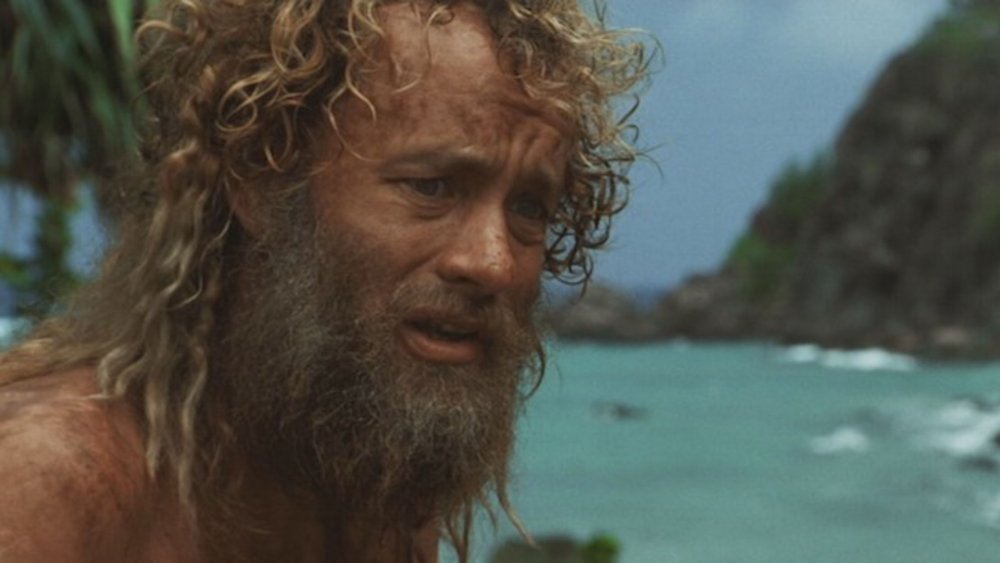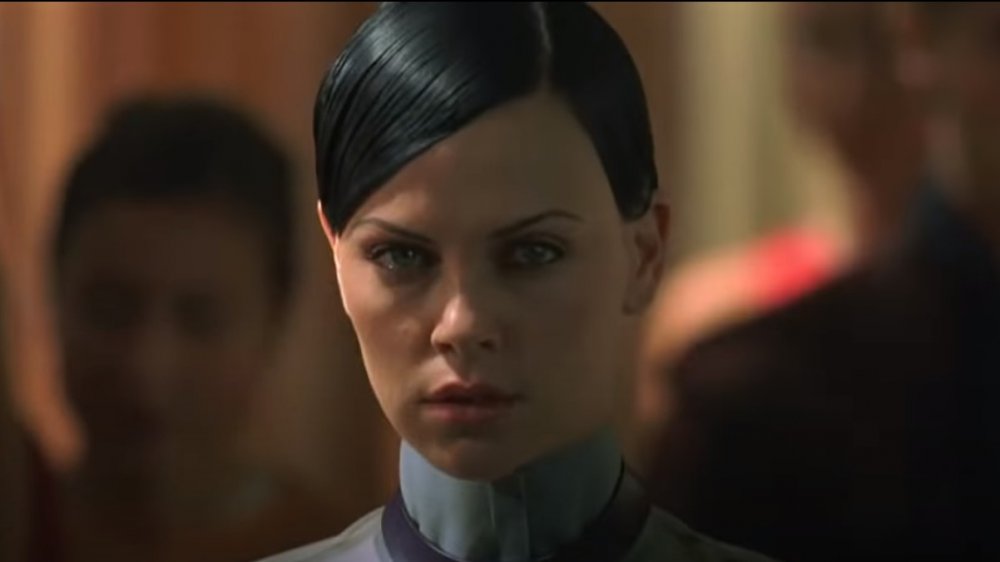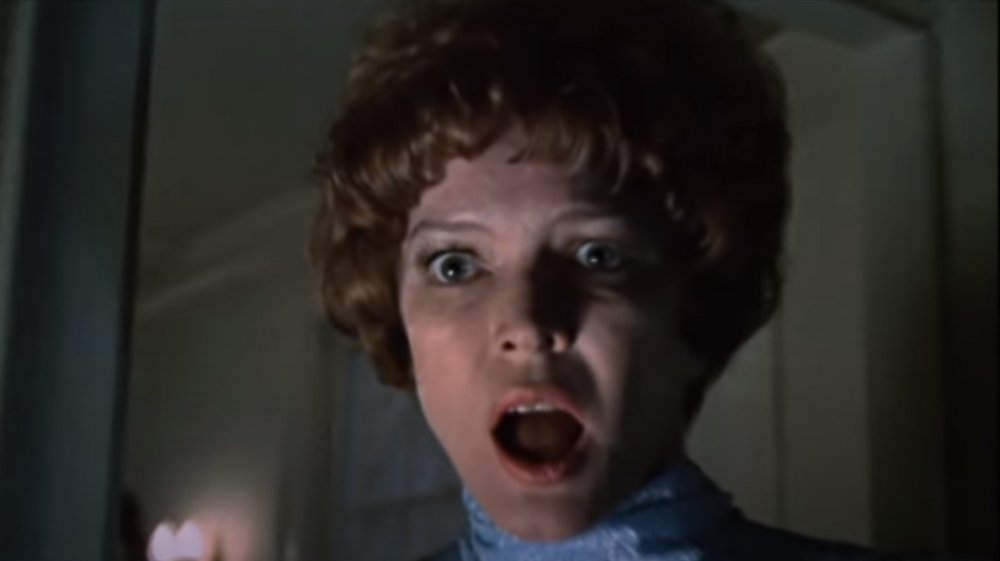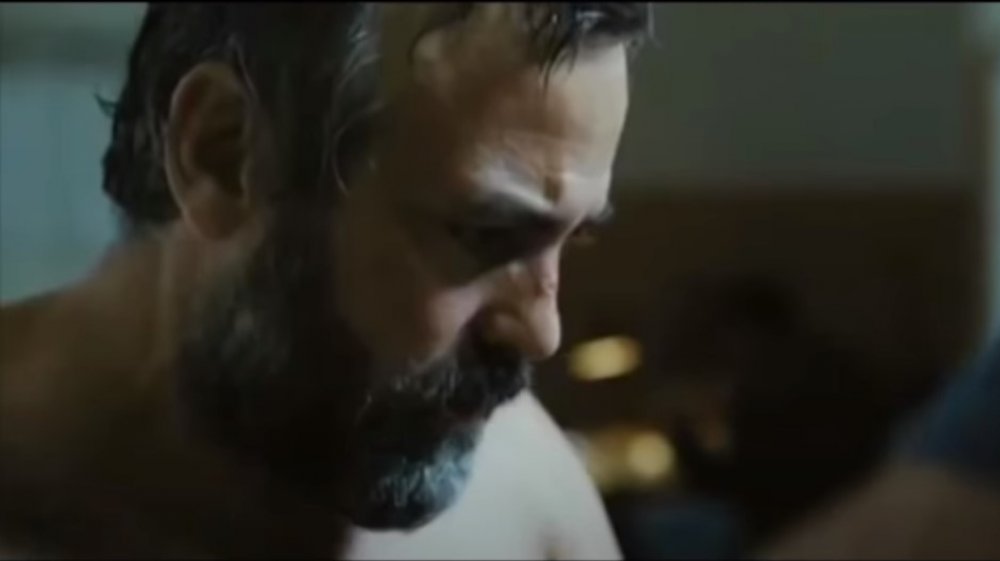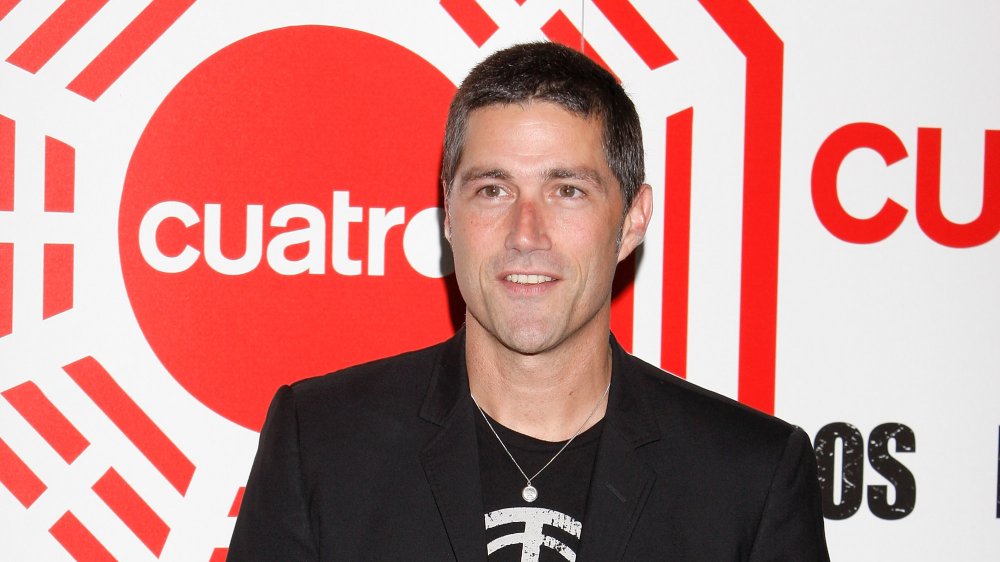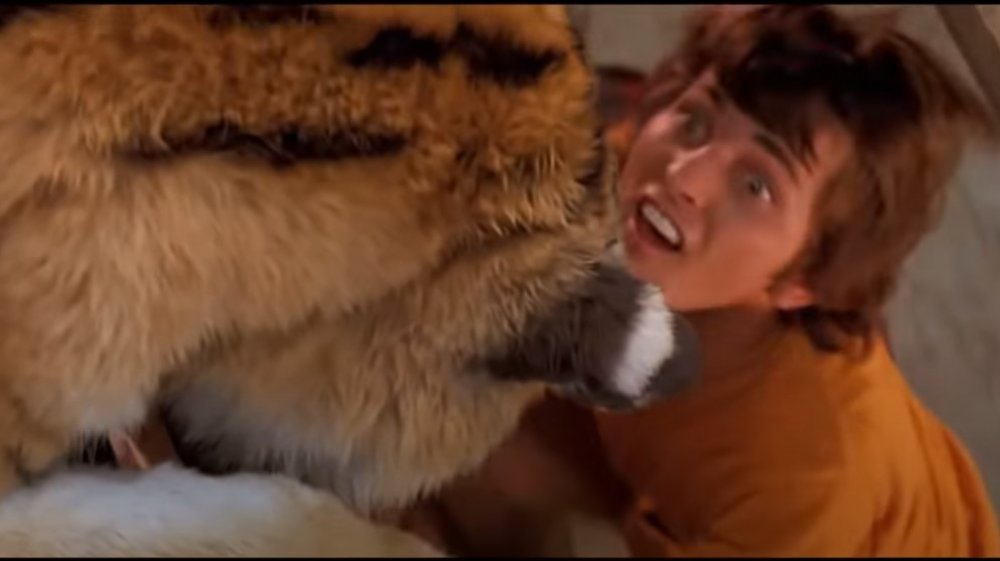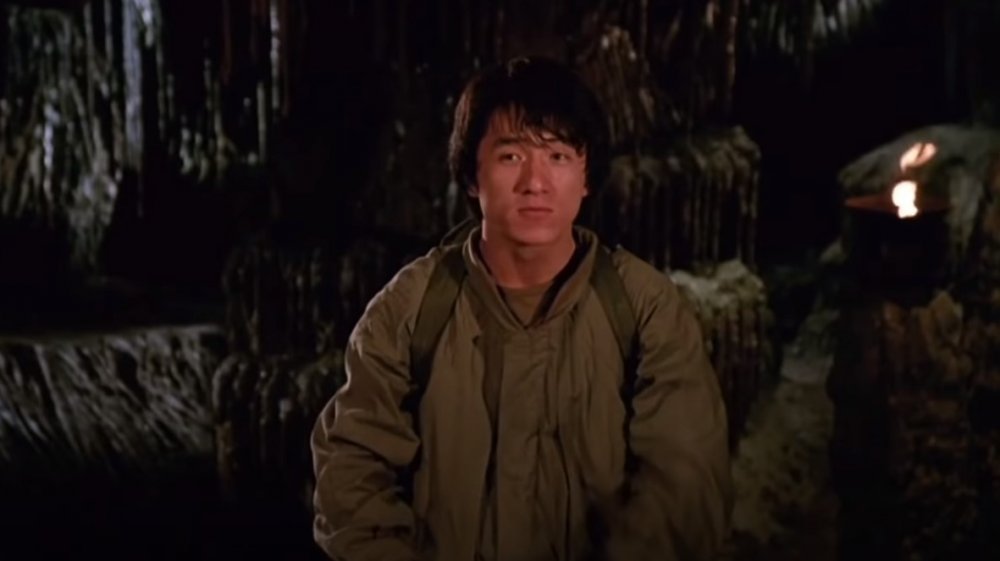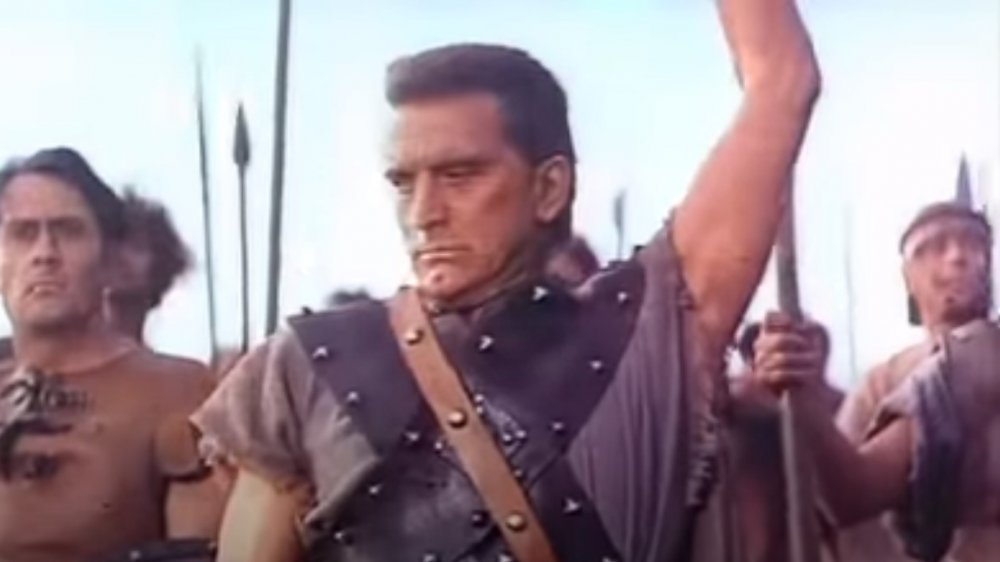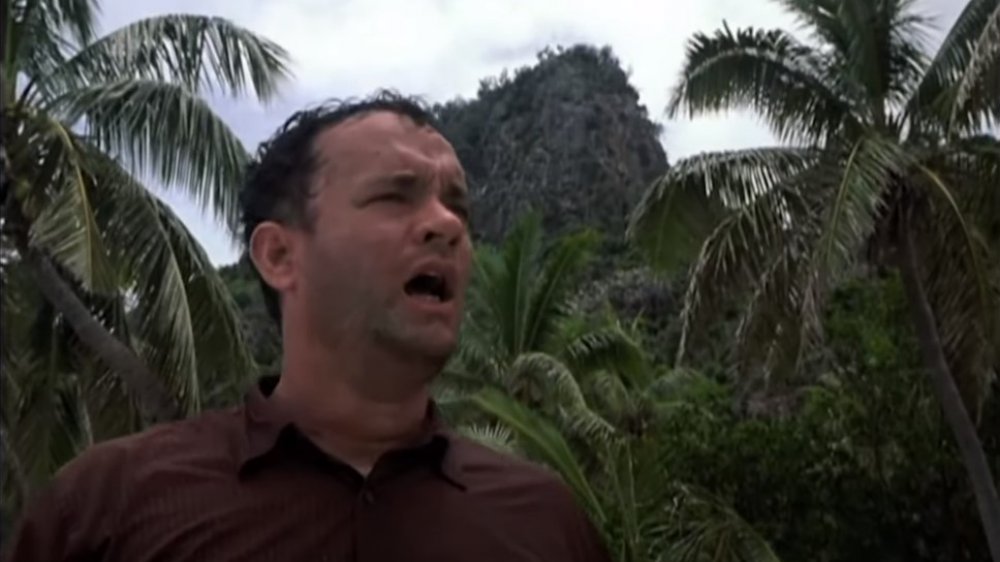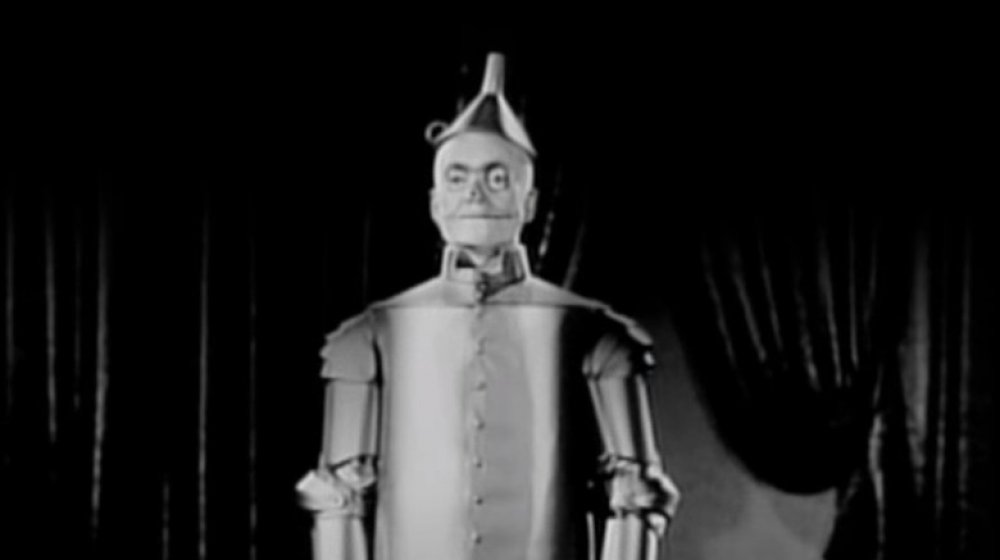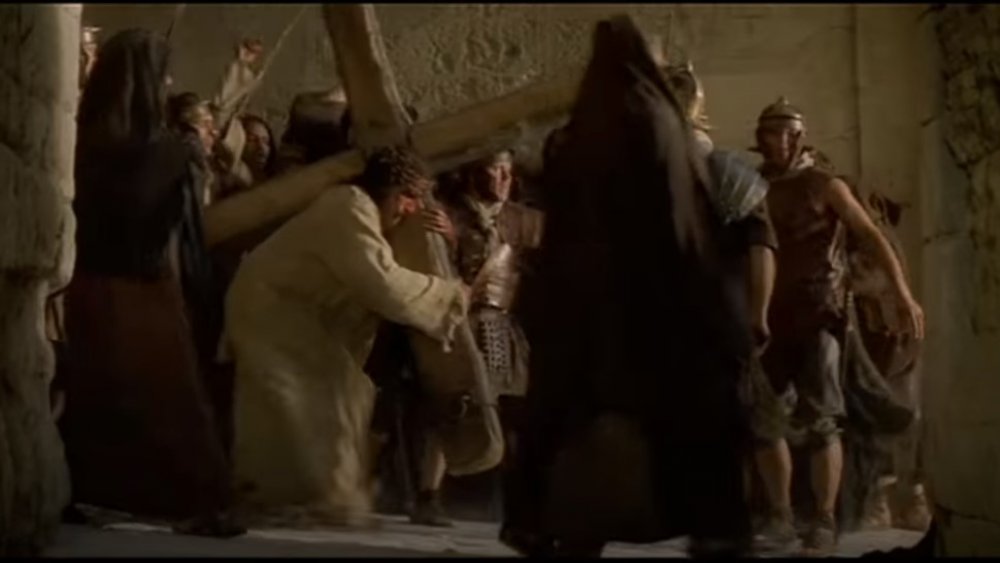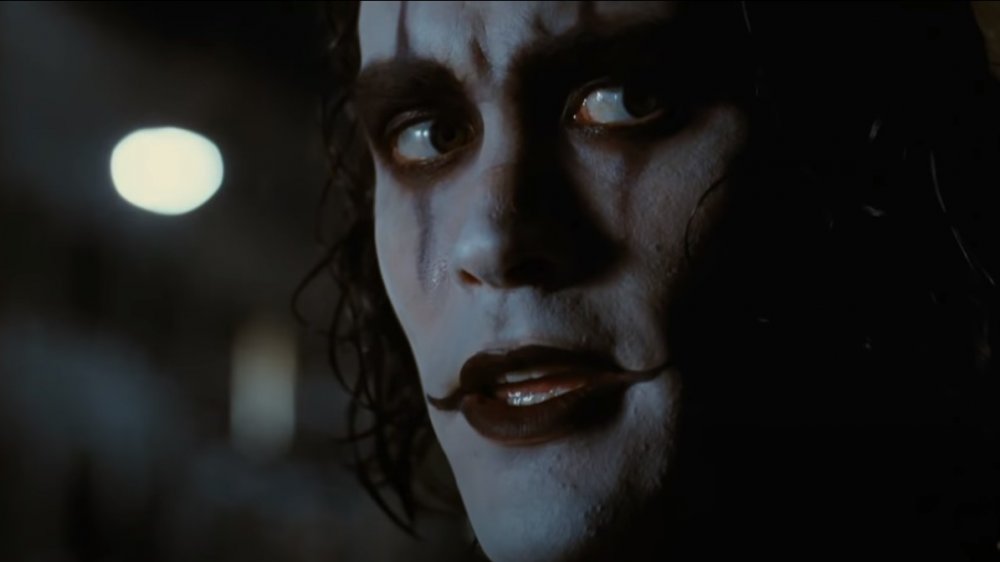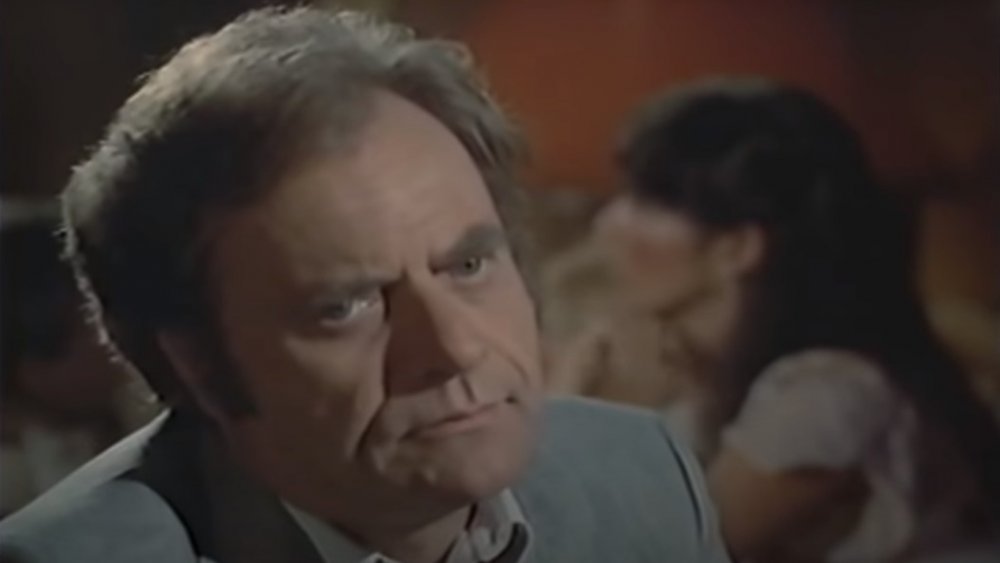Actors Who Were Tragically Injured On Set
Sure, making movies is glamorous and awesome, but it can also be dangerous. Over the years since the silver screen became a thing, Hollywood has constantly tried to make sure its actors remain safe. After all, if your star is hurt, no one else can work. Productions have been shut down for days, weeks, or even permanently over injuries.
So they use stunt workers and made strict safety regulations that all of the movie-making unions abide by. Let the pros handle the rough stuff so your on-screen talent can focus on what they do best.
The thing is, sometimes a stunt seems minor or the actor really wants to do it themselves, like Tom Cruise hanging off the side of an airplane. If the actor is feeling bold and the production's insurance will cover it, it's probably fine, right? But sometimes, accidents can happen and actors can end up majorly hurt, like these famous names.
Charlize Theron was almost paralyzed
MTV's cult animated show, Aeon Flux, started life as a short mixed in with a bunch of other shorts on episodes of Liquid Television, but it proved so popular, MTV gave it its own standalone series in 1992. While the show wasn't a giant hit, it garnered a respectable audience and a bunch of fans, so years after the show ended, MTV decided to attempt the franchise on the big screen.
The filmmakers cast Charlize Theron as the titular character, and while this particular movie wasn't great, after seeing 2015's Mad Max: Fury Road and other films she's done since Aeon Flux, it's easy to say she's one of the most badass women in the business. But she nearly lost it all when a stunt went wrong during filming. Theron was meant to do a backflip, but misjudged her landing and ended up falling onto her neck, which, ouch.
She was a mere centimetre away from being paralyzed, according to news.com.au, but was exceptionally fortunate and pulled through with no permanent damage other than some recurring pain, which she says she's since corrected with surgery. She did her own stunts again in 2017's Atomic Blonde without incident, so the accident clearly didn't slow her down for very long.
Ellen Burstyn and Linda Blair suffered permanent back injuries
While you might not think The Exorcist was an action spectacular, it did have a few moments that required minor stunt work. In one scene, Chris McNeil, played by Ellen Burstyn, is thrown to the floor by her daughter Regan, played by Linda Blair. In another, Blair was meant to thrash up and down on her bed. Both actors ended up with permanent injuries from these stunts.
For Burstyn, the scene was relatively simple. During one of Regan's demonic outbursts, Chris is thrown to the floor. To achieve this effect, the filmmakers tied her to a harness and yanked her to the floor, simulating the force of the demon. After the first take, she mentioned to director William Friedkin the operator pulled the harness too hard, but on the second take, she was pulled down even harder and shattered her tailbone, according to Huffington Post.
Meanwhile, Blair's thrashing was accomplished by tying her to a mechanism using a special corset, which could fling her up at a right angle, then back down. In one take, though, the corset came loose and Blair repeatedly slammed her back into the mechanism, fracturing her lower spine, according to an interview Blair gave for TV series Cursed Films. To make things even more uncomfortable, Friedkin used both takes in the final movie. Their screams of pain are real.
George Clooney had a significant brain injury on the set of Syriana
2005's Syriana got George Clooney an Academy Award for best supporting actor and a spot on a lot of critics' top 10 lists, but it also got him something far more dangerous: a pretty serious brain injury. During a scene in which Clooney is tied to a chair, the chair was accidentally knocked over backward with Clooney still tied to it. He hit his head the ground but thought he was okay, so he took it easy for a bit, and then went back to work.
But over the next several months, Clooney began suffering from horrifyingly painful headaches. Headaches so bad that he admitted he contemplated suicide just to get away from the intense pain, according to The Guardian. Because he had a family history of painkiller addiction, he also eschewed any sort of pain relieving drugs.
Clooney kept returning to the doctor over and over until they finally figured it out. During the fall, he ruptured a sac called the dura mater, a membrane that stretches from the spine into the brain and carries spinal fluid. The headaches and associated pains were apparently because his brain wasn't floating in the fluid like it's supposed to, but instead smacked into his skull, bruising it.
If you or anyone you know is having suicidal thoughts, please call the National Suicide Prevention Lifeline at 1-800-273-TALK (8255).
Lost could have had a far more tragic ending
After six seasons of audiences yelling "Wait, what?" at their TVs, LOST finally had its series finale on May 25, 2010 with a two-parter simply titled "The End." The episode features Dr. Jack Shephard (Matthew Fox) facing down The Man in Black, the show's primary antagonist, who has taken on the appearance of John Locke (Terry O'Quinn) in a cliff-side knife-fight as the island crumbles around them.
As shared by Jorge Garcia (who played Hurley on the show) on his podcast Geronimo Jack's Beard, though, the show very nearly ended in tragedy. In an episode dedicated to "The End," Garcia describes how during the episode's filming, Fox was supposed to be stabbed by O'Quinn with a collapsible prop knife. Since this was a pretty low-risk scene, originally the production wasn't going to force Fox to wear any sort of pad, but the stunt coordinator, Michael Trisler, stepped in at the last second. The only pad they could find that would fit under Fox's shirt without being obvious was a piece of Kevlar.
This ended up saving Matthew Fox's life, because a prop mix-up caused the collapsible knife to be swapped for the real one. O'Quinn stabbed Fox for real, but he only suffered minor injuries thanks to the Kevlar. If he had gone without the pad as planned or if they had used any other pad, he would have been very seriously injured or even killed.
The most dangerous movie ever made
In 1981, Noel Marshall finally released Roar, a film about big cats so disastrous that it almost makes Joe Exotic seem like a well-adjusted guy. After over five years of filming alongside his wife, Tippi Hedren, and step-daughter, Melanie Griffith, Marshall would show the world what he and his family worked so hard on.
Except it didn't quite go like that. There were stories that came out of production. The cast and crew suffered so many injuries related to the film's animals that it's actually not clear how many people ended up getting hurt. During filming, Hedren suffered multiple scalp wounds and a shattered leg, according to IndieWire. Griffith was mauled, nearly costing her an eye, and required facial reconstruction. Those weren't even the worst injuries, as a cinematographer was nearly scalped by a lion and Marshall himself ended up getting gangrene from his numerous animal wounds.
The problem, according to The Vintage News, was that the animals were entirely untrained and all of the scenes with them were improvised. They were all the property of Marshall and Hedren, and there was no on-set trainer. The film was shot on Marshall and Hedren's own ranch, and this was before most modern safety requirements. It must have hurt all the more when, after literally shedding blood for the camera, Roar completely failed at the box office.
Jackie Chan almost died in a stunt gone wrong
It should be no surprise that Jackie Chan has been injured numerous times. He famously does his own stunts, and they're not little stunts, either. They're big, impressive martial arts feats that typically utilize the environment around him. Chan says he's suffered all kinds of broken bones, but one stunt in 1986's Armour of God nearly killed him. The movie, co-directed by Chan himself, was filmed in Yugoslavia, meaning what safety standards existed in film making in 1986 were made even murkier due to the shoot's locale.
In the scene, Chan was meant to leap from a wall onto a tree branch. According to Cinema Blend, the first take actually went off without a hitch. Chan decided to do a second take, though, and that's when things went wrong. This time, the tree branch broke, sending Chan plummeting nearly 20 feet. Worse still, he hit his head on a rock. The only reason he survived was because members of the crew carried him down the mountain they were filming on to a nearby hospital.
After a tense operation, Chan survived, but now has a permanent hole in his skull, which will never heal. In an appearance on Conan, he let host Conan O'Brien feel the hole and told him that there's a small, plastic plug stuck in the spot since the accident.
Waiter, there's a guy in my soup
You might not know Charles McGraw, but you've probably seen his movies. A character actor, McGraw made appearances in all sorts of films, but the most famous was 1960's Spartacus, where he played Marcellus, Spartacus' gladiator trainer and a minor villain who has his comeuppance when Spartacus drowns him in a pot of soup during a slave revolt.
It was during the filming of the soup scene that McGraw ended up seriously injured. Kirk Douglas, who played Spartacus, was meant to force McGraw's head into the soup, but the actors slipped and McGraw's jaw ended up hitting the side of the soup pot, which was an actual iron cauldron. The shot is in the final film, and if you watch it carefully, you can see the hit (to which the editor added sound effects) and a dazed expression on McGraw's face, which is real, because Douglas had just shattered McGraw's jaw. Yowch.
That wasn't the end of it, though. Douglas blamed McGraw for the accident, which angered stuntman Louie Elias, according to Classic Movie Fight Scenes. Elias then stepped in to do a take of the scene, but ended up also hitting his face on the pot. He only required four stitches to his chin, however. Elias claimed it was his own fault for slipping but it's hard to rule out that Kirk Douglas just liked smacking people in the face.
Imagine how Wilson would have felt
Tom Hanks is known for dedicating himself to a role and immersing himself into a character. For example, in 2001's Cast Away, Hanks really lost 50 pounds to portray Chuck Noland, a FedEx logistics officer who ends up stranded on a deserted island. Amazingly, Hanks is able to carry a movie almost entirely by himself, but maybe that part isn't a surprise. What is surprising is that a minor injury on set nearly killed Hanks.
During filming, Hanks suffered a small cut on his leg, according to Good Housekeeping. Nothing major, it wasn't a serious injury at all, and Hanks shrugged it off. But two weeks later, the wound was still there and still very sore. Deciding that it was time to get the cut checked out, Hanks saw a doctor who told him something shocking: He was about to die.
The cut had a staph infection, and it was getting worse. Hanks had been completely unaware that his own blood was turning into poison inside of him and passing the infection throughout his body. Now, naturally, if this happened to a FedEx employee on a deserted island, he'd be in big trouble. In fact, it's not uncommon for survivors to fight infections while awaiting rescue. Tom Hanks has movie star health insurance, though, so he spent a few days in the hospital and was thankfully just fine.
Buddy Ebsen nearly died from aluminum poisoning
Buddy Ebsen is most famous for playing Jed Clampett on The Beverly Hillbillies, but he could have had a role with even more prestige: that of the Tin Man in the 1939 classic The Wizard of Oz. Ebsen was originally cast to play the part of the Scarecrow, but the actor playing the Tin Man, Ray Bolger, convinced Ebsen to switch roles with him. Bolger, you might notice if you check IMDb, did appear in the final film as the Scarecrow, but Ebsen is nowhere to be found in the cast list.
That's because the production tried using aluminum dust in the Tin Man's makeup to give the character a metallic look. Unfortunately, this had an unintended side effect, as prolonged exposure to aluminum dust can be deadly, causing issues with breathing and eventually causing the lungs to fail, which is what happened to Ebsen. On top of this, it seems Ebsen had an allergy to aluminum, which made his symptoms even worse and nearly killed him, according to Snopes. He spent six weeks recovering, but did survive.
Meanwhile, the film was stuck without a Tin Man, so the producers replaced Ebsen with Jack Haley, who played the Tin Man in the final film. They also changed his makeup to an aluminum paste instead of using loose aluminum dust. Haley got an eye infection at one point, but didn't end up nearly as sick as Ebsen.
Jim Caviezel suffered multiple injuries as Jesus
Actor Mel Gibson has also spent some time in the director's chair. He made a little film you may have heard of called The Passion of the Christ — a 2004 R-rated depiction of the suffering Jesus is said to have endured at the hands of the Romans during his execution. In the same era of graphic horror movies like Saw and Hostel, Gibson's dark and gritty crucifixion story stood its own ground in terms of violence.
Star Jim Caviezel, who played Jesus, also suffered quite a bit during filming. A weird cavalcade of injuries befell him on set, more than one of which could have killed him. The film shows Jesus carrying his own cross while being whipped by Roman soldiers. One of the extras in these scenes accidentally whipped Caviezel for real, leaving a 14-inch gash on his back, according to the Washington Examiner. The cross prop itself also weighed 150 pounds and fell on Caviezel at one point, sending him face-down in the sand and causing him to badly bite his own tongue. This shot is included in the film, and the blood pouring from his mouth was real.
On top of being nearly crushed, whipped, and numerous other painful injuries, during the filming of Jesus' famous Sermon on the Mount, Caviezel got struck by lightning. Caviezel says that smoke came out of his ears, but he must have been properly grounded, because he was otherwise okay.
A prop malfunction ended Brandon Lee's life
Brandon Lee, son of martial artist and actor Bruce Lee, had a promising acting career ahead of him. He had just scored his first major leading role, playing Eric Draven in an adaptation of James O'Barr's underground comic series The Crow. The film was already shaping up to be the ultimate goth film, full of melodrama, people dressed in black, and a soundtrack packed with some industrial and metal bangers.
But the film took on an even darker and more somber tone after March 31, 1993, when Lee was accidentally shot and killed on the movie's set. During filming of a scene where Lee's character is shot, things appeared to go off without a hitch. The gun, loaded with blanks, went off and Lee hit the floor. Soon, though, crew members noticed blood pooling around Lee's side. He was rushed to the hospital, but died hours later.
The production later pieced together what happened, according to Inside Edition. In a previous scene, the crew filmed a closeup of the prop gun being loaded. Dummy bullets were loaded into the gun for this shot, then removed and replaced with blanks for the next shot, where the gun would be fired. Unnoticed by the props department, though, was a piece of the dummy bullet lodged in the gun. With the dummy bullet fragment and blank combined, this effectively made a live round, which was what ended up killing Lee.
Horror on the set of The Twilight Zone
In 1982, directors Steven Spielberg and John Landis began working on a film based on the 1960s television series The Twilight Zone. The film would be an anthology, remaking four episodes from the show, each with a different director. Spielberg and Landis took one each, and directors Joe Dante and George Miller made two others. Landis chose a segment called "Time Out," an original story loosely based on multiple episodes of the show.
In the segment, actor Vic Morrow plays a racist named Bill Connor who changes his ways after traveling back in time and experiencing famous moments of oppression from the perspective of the victims. This includes a scene during the Vietnam War, where Connor is shot at by American soldiers. In the film, Connor is attacked alone and escapes alone, but in the original script, he was meant to rescue two Vietnamese children as well.
These children, non-actors who were hired illegally, were Myca Dinh Le and Renee Shin-Yi Chen. In a scene where Morrow carries them both across a river, a low-flying helicopter was meant to swoop overhead with explosives going off nearby, according to History. These explosions brought down the helicopter, which crashed on top of Morrow and the two children, killing all three. Landis and several other members of the film crew were accused of negligence and brought to trial, but were all acquitted in the end.
